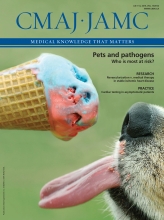This compendium of essays adds to the conversation about the place of humanities and arts in medical education. The modern version of this debate has been going on since Abraham Flexner published his famous report in 1910, advocating the supremacy of the biomedical model as the foundation for educating doctors.
Cheryl L. McLean, an independent scholar and publisher of The International Journal of the Creative Arts in Interdisciplinary Practice, has arranged this resource book in four sections, covering education for empathy, practitioner self-care, use of narratives and use of the creative arts to create change in health.
A recurring theme in the “Whither (Whether) Medical Humanities?” debate1 is that the presence of humanities in medical education can boost empathy and sharpen powers of observation. Given the acceptance of a scientific basis for the education of physicians (and current reliance on reproducible, numeric evidence), much of the medical humanities discussion occurs on the margins of the medical education enterprise.
In her recent keynote address at the 2014 Alberta Psychiatric Association meeting, McLean posed a central question in the debate over efforts to include medical humanities in medical education: How do the creative arts help practitioners enhance clinical and relational skills?
The amply credentialled contributors to Creative Arts in Humane Medicine — physicians, medical students, allied health professionals and artists — provide some answers, but raise yet more questions: How shall we define terms like “medical humanities” and “humane medicine”? How useful is it to do a cost–benefit analysis of the humanities in health care?

Image courtesy of Brush Education
The specific creative activities undertaken by the contributors speak to the scope and staying power of this debate. For example, music therapist Amy Clements-Cortes examines music therapy as a treatment option for patients and their caregivers, to relieve stress, to improve communication and interpersonal understanding, and to process grief and loss.
Rachael Allen worked as an artist-in-residence in anatomy and clinical skills labs in a UK medical school. As an artist embedded in a medical education setting, she explores the phenomenology of illness. How do we reconcile first-person experiences of illness and death with the objective reductionism of disease that is more typical of biotechnology in medicine? Allen poses the question, “How can the visual arts educate medical pedagogy?” This perspective contrasts with a common perception among medical educators of humanities’ role as handmaiden, usually pleading to contribute to the serious enterprise of educating doctors.2
An underlying question remains unanswered: What would be the best forums in which to engage in such interdisciplinary inquiry? We are also left with the prickly task of how to assess the effects of such educational innovations on learners (and the care and well-being of their patients).
Most of the contributions in this book are qualitative descriptions and assessments of things being tried in different training and care arenas. Elsewhere, Catherine Belling has cautioned, “The methodological minefield that stretches between any curricular intervention and the improvement of patient health is immense, and it explains the powerful trust that medical education places in tradition.”3
Some kind of evaluative methodology is as necessary as the defining of terms and the setting of objectives — but exactly what kind remains elusive. In the meantime, rather than creating a course in medical humanities, Dr. Rita Charon has advocated identifying “senior influential clinicians” as key players in the integration of the arts with the science of medicine. These clinicians are individuals “who themselves have been exposed to and altered … by deep learning in humanities and narrative studies.”4
Their teaching methods reflect that learning and enable them to foster an invigorating, long-term and necessary interdisciplinary collaboration on clinical teaching that can include and welcome senior artists and teachers from the humanities. Gifted voices from both medicine and the humanities have contributed to Creative Arts in Humane Medicine in McLean’s ensemble effort to show us different paths to the future.
Footnotes
For references, please see Appendix 1, available at www.cmaj.ca/lookup/suppl/doi:10.1503/cmaj.140532/-/DC1











